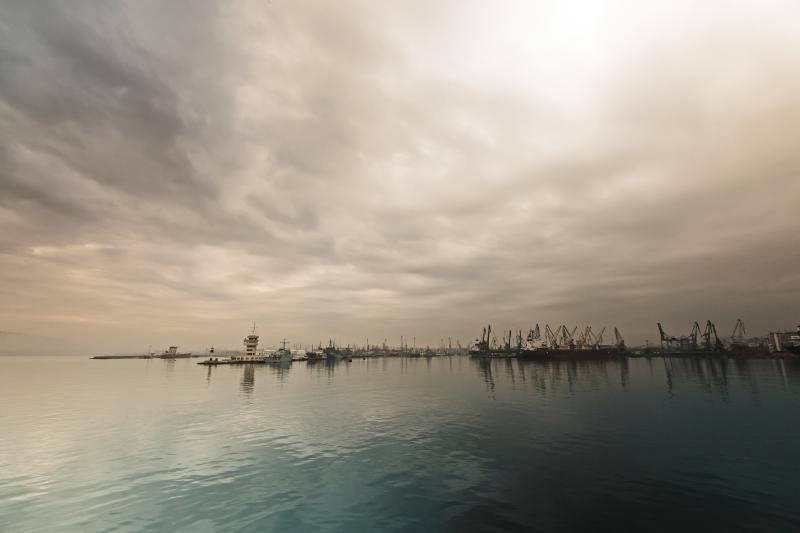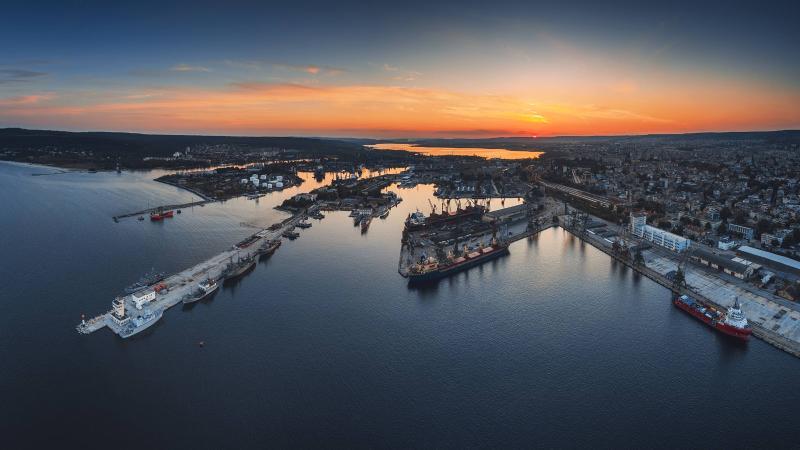The ports in Bulgaria and in Portugal are modernising infrastructure to cut congestion and carbon emissions
Bulgaria’s ports are increasingly important staging points on the supply route of food from Ukraine to the rest of the world. But bottlenecks around the ports lead to extra CO2 emissions and extra costs for shippers, transport operators, businesses – and ultimately consumers. That’s why one of the country’s leading grain trading and processing companies, Buildcom Group, is building a major new port terminal at Varna on the Black Sea coast.
“The maritime infrastructure in Bulgaria is outdated and with low processing capacity, especially at Varna,” says Tsvetelina Gancheva, director of relations with financial institutions for Oliva AD, the largest Bulgarian producer of sunflower oil and main subsidiary of Buildcom. “The maximum depth of the ports in Varna limits the flow of large-volume vessels, and the capacity for handling general cargo by the regional ports is severely limited.”
Buildcom Group will fix this situation with a €50 million loan from the European Investment Bank to its subsidiary, the Logistic Centre Varna EAD. The new terminal will allow the transfer of some port handling operations from its current location close to the city centre to a more remote location on Beloslav Lake near Varna.
The loan is backed by the InvestEU programme.
Adding a new terminal and new depth to the port of Varna
The lack of infrastructure at Bulgarian ports became urgent when Russia invaded Ukraine in 2022. The port of Constanta in Romania was overloaded by an increase in Ukrainian grain, yet cargo couldn’t be shifted to Varna since it wasn’t equipped to deal with the extra ships and cargo.
The new project will modernise Varna’s port, support food security, promote greener maritime transport, and boost economic growth in the region by improving access to the export market for local agricultural producers.

Port of Varna, Bulgaria
“We view the project as strategic for Buildcom group, allowing us to expand to new markets and to improve the efficiency of our exports,” says Gancheva. “We are happy to support a long-term client such as the Buildcom Group and strengthen the vertical integration and access to export market for the Group,” says Venera Gandzhova, the loan officer in charge of the EIB loan operation.
Established in 1994, the Buildcom Group includes Logistic Centre Varna EAD, which will be in charge of managing the transport and storage of grain at the port of Varna, and Oliva AD.
Read about Lithuania’s inland waterways
Expanding maritime infrastructure reduces CO2 emissions
The new terminal will open the way to more and bigger vessels by increasing the depth at the quays to 13.5 metres. It will also have a modern system for grain storage and transport, as well as new handling equipment, new railway and road access, utilities networks, and technical and administrative buildings.
Expanding the port will ultimately reduce road transport, shifting freight to less carbon-intensive maritime transport.
“This project will optimise transport routes on land and at sea, improving the CO2 footprint,” Gancheva says. “It has an integrated approach that secures climate change mitigation, while also seeing to coastal management and the prevention of floodings.”
At the same time, cargo passing through the centre of Varna will be significantly reduced – a benefit to the city’s population.
“Traditionally, the port of Varna was located closer to the sea,” says José Rino, a civil engineer who worked on the project at the European Investment Bank. “But its close proximity to the centre of town had a negative impact on the general population, with its sound and air pollution. One of the main steps in this project was to make sure that the new port infrastructure moved to the interior part of Lake Varna, away from the populated area.”

The old port of Varna close to the city.
Improving maritime accessibility of the port of Leixões
As around 74% of goods enter or leave Europe by sea, it’s crucial to invest in modern maritime infrastructure for both agribusiness and industrial cargo.
A project in the port of Leixões, the most important seaport in northern Portugal and the second largest in the country for cargo and containers, allows bigger vessels to call at the port. It tackles port congestion, improving the efficiency and environmental performance of the maritime supply chain.

The European Investment Bank signed a €60 million loan with the Administração dos Portos do Douro, Leixões e Viana Do Castelo to finance maritime accessibility improvements in Leixões, deepening the access channel by 15.5 metres and widening the existing breakwater by 300 metres.
“In the last few years, ships have been getting bigger, in order to gain economies of scale by transporting more cargo and travelling larger distances,” says Rino, the European Investment Bank civil engineer who also worked on this project. “The current port infrastructure needs to be adapted for these larger vessels to make port. It’s crucial if Portugal wants to remain competitive in the maritime trade sector.”

